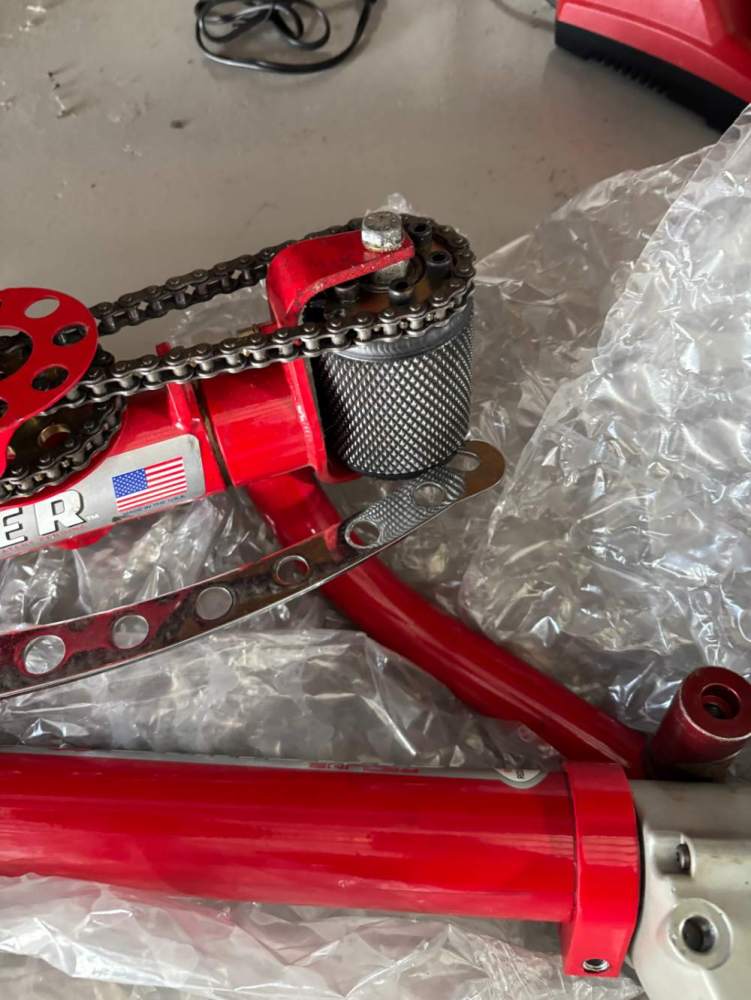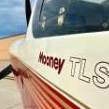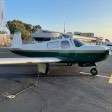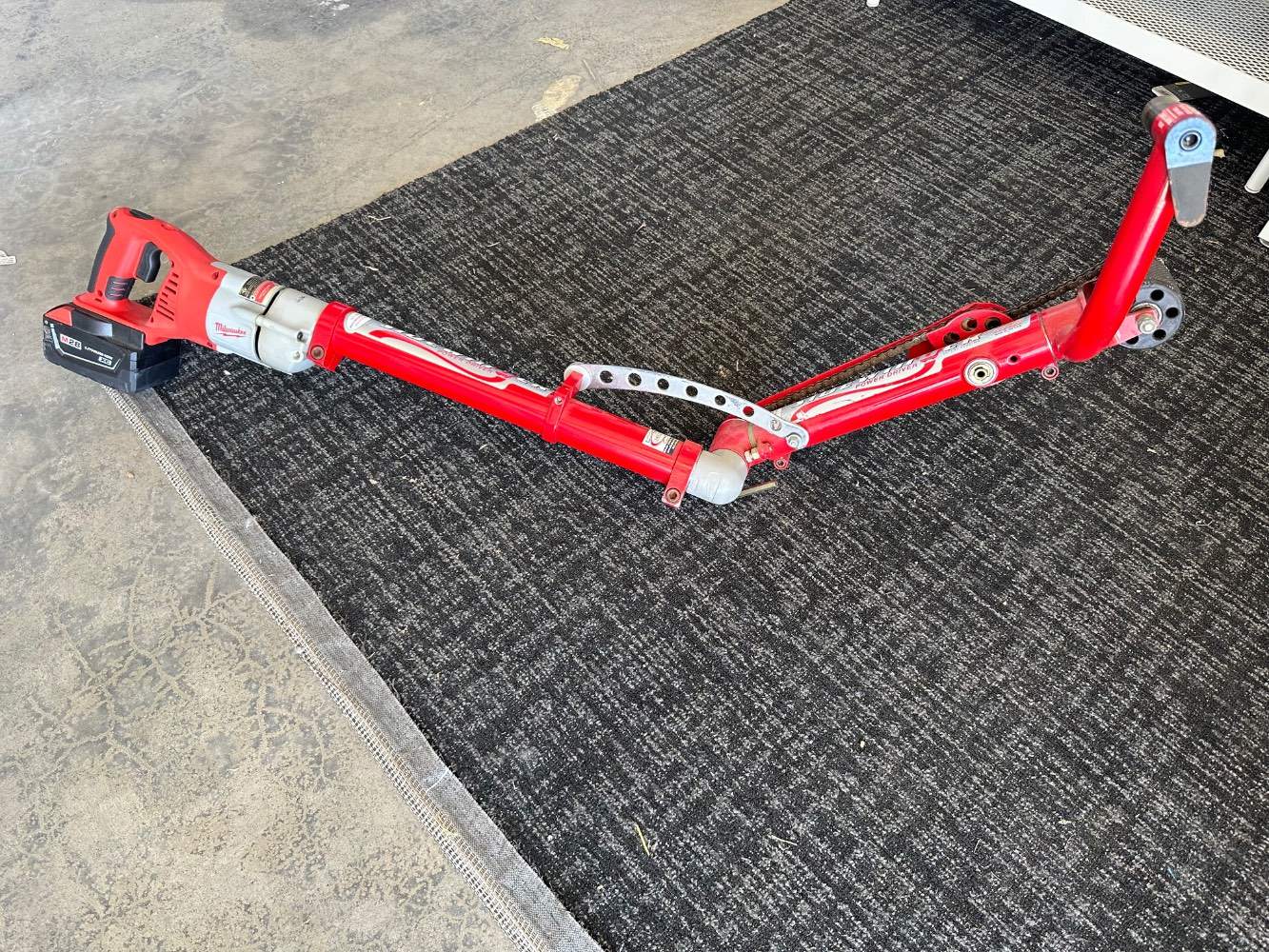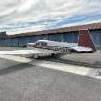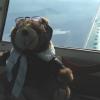Search the Community
Showing results for 'sidewinder'.
-
Hello, I am M20Doc's apprentice. I am selling a Redline aviation sidewinder mooney electric tug. It is in a like new condition and has been tested for any faults. These sell for $2390USD at: Sidewinder for Mooney - www.redlineaviation.com I am asking 1800USD for this tug. Please reach out to me if interested. 226-668-2283, brycedennis219@gmail.com located in Ontario, Canada. Thank you, Bryce
- 1 reply
-
- 1
-

-
I have a sidewinder I bought in late 2022 from the manufacturer for an Ovation I owned at the time. It comes with a battery and charger. I'm in Massachusetts. Phil 413-530-0112
-
I have searched through the topics and unable to find a definitive answer. Any 4 blade MT prop (or other manufacturer) long body Mooney drivers use a Sidewinder powered tow bar for their plane? Any issue with the prop blade width or tow clearance?
-
Bought from another MS’er on here. Doesn’t work very well with my heavy O up an incline and a 1 inch lip into the hangar. I’ll let it go for 1K plus shipping. Includes battery and charger.
-
So I built something myself for about $200 in parts. I may have to drop the tire down or make a handle extension to get the geometry right, I'll find out when I try it tomorrow. The little C seems to gain weight every time I push it back into the hangar. Plus, it's hard to steer and get enough momentum to get over the lip. Sent from my Pixel 6a using Tapatalk
-
- Mooney Sidewinder tug + battery + charger - Picture - $1000 - Fargo G2 ANR with dual plugs. Lightly used as a passenger headset. Pictures - $100 - Aerox D tank, 4 place + seat mount - This is on the smaller end, but I've never filled it more than once a year. I'd guess I get at least 20 hours of use out of it on a cannula. I have 4 cannulas and a mask, but the cannulas have been used. Pricing this is hard - Pictures - $200 - Switcheon 2 channel - $100. Works great for preheat and/or hangar lights. It should be able to use my existing subscription for the next 11 months. Pictures - The Claw tiedown kit - Used once, good condition. Picture. - $50 - ACR ResQLink 400 - Never used. Picture - $200 - Garmin GDL 39 - Used for several years. Still works great. Includes battery, charger, case, cigarette lighter charger and a mount. Pictures - $200
-
Faro G2 is sold Sidewinder and Aerox are on hold. The aerox may be difficult to ship, so if you're willing to pick up the oxygen tank at OAK or SQL, or are located in the san francisco bay area, please let me know!
-
@Sam Judd I am interested in the sidewinder. Sent you a message Ryan
-
I have a story about not using a checklist properly. This was about 20 years ago in my Lancair 360 (that I built). The air induction system was up to the builder, and I constructed a pilot-controlled ram air and filtered air setup. My checklist called for taxiing with filtered air and switching to ram air at the end of the runway. For some reason, on one flight I skipped that step and took off on filtered air into rain at 40 F in Philadelphia. The cloud deck was several thousand feet thick with tops at about 8,000 feet. As I was seeing the sun peaking through the last of the layer, I noticed my fuel flow dropping (I should have also noticed my manifold pressure dropping but that's not what I remember). The engine started popping (since it was being motored) and power was about gone. I declared an emergency, got it turned around and back to the field. As I descended through around 4,000 feet the power came roaring back. It turned out to be a frozen air filter that blocked flow, and I had no automatic alternate air (as we do in the Mooneys). All I had to do was switch to ram air... I've done plenty of other dumb things: forgot to latch the baggage door (having it pop open in flight), take off with mixture not full in, not had barf bags on board, forgot to put the engine data card back into the MFD, etc. All of these are now checklist items. I've never landed gear up and never had a prop strike. Some of that is learning from people on this site. I never leave a tow bar or sidewinder attached to the plane when not in use. GUMP(F) is a religion (F for flaps). The checklist is a complex subject. Perhaps a few other useful thoughts: It's a living document for at least the first 2 years: I started with the Mooney POH and created a MS Word checklist in trifold format. I tuned it for goofs and circumstances so that now there's very little that can happen that isn't covered. My checklist covers from days before the flight (e.g. call ahead to FBO and check passenger airsickness risk) thru shutdown. I have telephone numbers for popular FBOs, and short procedures for steps I have trouble remembering (e.g. VNAV, Icing considerations, temperature lapse rates, etc.) At this point (about 2-years into Ovation ownership) the checklist comprises 2 pages (front and back) in landscape trifold format, plus one piece of a 3rd sheet. I periodically try to whittle it down by removing unused steps and combining some. Every "aw shucks" becomes a checklist review to see if a change is needed. I've had instructors advise following a FLOW model. I've not found that to be intuitive for me. Instead, I try a pneumonic (like GUMP) or add it to the checklist (such as various types of instrument approaches along with speeds). For takeoff, I listed the important before-take off items, and gave the first letter of each to my daughter with the challenge of coming up with a pneumonic. She did: FLAPPERMAT: Flaps, Landing lights, Pilot's window, Propeller, Elevator trim, Rudder trim, Mixture, Traffic Alert breaker pushed in. The key takeoff killers are there on the G1000 engine page: both trims. Then the 3 engine controls full forward. Some things really need to be memory items because there's not time to consult a checklist. Missed approach and Clean, Climb, Cram is a case in point (plus hit the go-around button). Sure, I've climbed up to altitude for another approach, wondering why my trim and airspeed feel funny, only to see that I forgot to raise gear and flaps, or I didn't notice the speed brakes were deployed due to a view-limiting device. A checklist review at level off will catch these things. Best, Ed
-
Anyone with a sidewinder for sale?
-
The new owner of my plane didn't need a Sidewinder in a shared hangar, so here it is. Provided me with three years of very reliable service. I carried it in the plane only once (to Catalina to help with camping) and it otherwise resided in my hangar. Comes with the Sidewinder, battery, and charger. Asking $1500. I don't have a Milwaukee tool bag with mine but you can find them on Amazon or other sources for about $20. Redline also sells them on their website if you want one direct from the source. Available for local pickup at KSEE or I can meet you in Southern California at a mutually agreed time and location; otherwise, shipped at actual cost.
-
Hello, everyone! Forgive me if this is not the proper channel. I'm looking for a Sidewinder tug for my Mooney and Facebook seems hell-bent on letting scammers run the show. I have had several fake profiles try to sell me units, but not one has been trustworthy enough to move forward with a deal. A few even blocked me when I asked for more photos, and one just changed their name entirely.. as if I wouldn't notice. Strange. Anyway, I'm looking for a Redline Aviation (the newer kind) version of the Sidewinder Tug for my M20E. If anyone is selling one, or knows a reputable source, point me in their direction! My hangar is up a little hill, and over a small lip, and I find that pushing the plane back with my simple tug bar is not as well-controlled as I'd like it to be.
-
Any body have any experience with the alpha line from best tugs. Currently own a sidewinder and I find that after a long set of flights I would rather user the Mooney tow bar instead of messing with it. Thanks Matt--
-
After 5 years finally purchased the tug. Wished I had pulled the trigger earlier. Now the sidewinder for out remote when I’m still fresh and the tug when I get back home in the afternoon. Sent from my iPhone using Tapatalk
-
For sale: 2022 Sidewinder hand tug with Milwaukee drill motor for Mooney. Located in Tucson, 520.484.5865. $1600, plus freight (would rather have you pick it up).
-
Good evening folks - I thought I would share some interesting points about my flight today from Pontiac, Michigan (KPTK) to Philadelphia (KPNE). The weather brief was consistent for the prior few days: A strong low pressure above Maine with dense isobars promising a powerful tailwind for the trip. The specific forecast was about 75 knot tailwind at 15,000. Surface winds were gusty at both departure and arrival. The morning low temperature caught me a little by surprise (12 degrees F), as we had enjoyed milder temperatures so far this winter. Fortunately, the night before I set the SwitchOn to give me 5 hours of engine and cabin pre-heat prior to my planned 9am departure from Pontiac. By now, I've figured out the clothing needed to manage the in-hangar pre-flight and only open the hangar door when the plane is ready to drag outside. (This is my second winter season, but much of last winter had the airplane in the shop for one thing or another.) The arrival at the airport hangar was in bright (cold) sunshine with scattered clouds at 4,000 MSL. Gusty winds were nearly down the east/west runway. I packed the plane with gear I might need in Philadelphia (TKS hand sprayer, 100 foot extension cord for engine heater, tools, etc.) and pulled the plane out with my Sidewinder tug. Or tried to. There was a light coating of snow on the pavement outside the hangar, maybe half an inch, but a dry area for about 10 feet outside the door before the snow layer started. As I pull the plane out, I wait for wing to clear the door then turn the tug to the left to angle towards the taxiway. I got the plane partially out, cleared the wing and started the turn. When the nose wheel hit the snow, I noticed the sidewinder having trouble getting purchase on the snowy nose tire. Then, when the mains hit the snow, enough resistance built up that the sidewinder simply slipped on the nosewheel. Luckily, the tail was clear of the door so that it could be closed. The plane was at a 45-degree angle, so some prop blast would be towards the door, but seemed (and turned out to be) fine. If snow had piled up against the door, obviously I'd be doing some snow shoveling while guessing how the tires would track so that I'd only need to clear the track for the tires. I have a shovel in the hangar and all this dawned on me as I looked at the airplane sitting there at the 45-degree angle. The pavement slopes downward away from the hangar door, so gravity was working for me. Putting the plane back in, up the slope, in snow, may not be possible with the Sidewinder. I remember pulling a club Mooney a long time ago into a hangar with a winch at the back of the hangar. I need to figure this out. The runup, clearance, and take off were normal, albeit "sporty". Once the power was in, I glanced at the airspeed tape on the G1000 and saw 45 knots really quick. Cold and headwind. This plane has the 310hp STC. I push the go-around button before takeoff to set the flight director and prepare for AP engagement at 400 feet AGL. Tower was a little slow to pass me off to Detroit Departure, so I was able to engage AP at 400 feet and was about to select heading when Tower passed me over to Departure. As I was reaching to select Com 2, there was a massive jolt, as if the Fist of God had hammered the top of the airplane. My head (more accurately my Bose headset) hit the ceiling and I was momentarily stunned. Not physiologically, but mentally. You've experienced it: an event that shocks your system and takes a couple of beats for your brain to check in with body systems to assess damage. The Bose crackled a bit, seemingly unhappy with the ceiling impact, but I felt no pain. By the time I wondered about the airplane (a second or two later), my brain registered that the engine had not missed a beat and nothing abnormal was felt in the controls. Before I could think to worry about the structure, the plane was saying "don't worry about me". A few seconds later, I got it together and switched to Departure. Interestingly, other than that jolt, the rest of the climb through 4,000 MSL was fairly mild bumps up to the glass smooth air above the scattered layer. As I climbed, I looked at the seatbelt to cinch it tighter but realized that with the 3-point design, there's not a great way to get much more vertical restraint. Perhaps I can get the lap belt portion tighter. The rest of the climb out to the southeast was uneventful, other than the promising ground speeds that were developing. I filed for 15,000 to get the optimum tailwinds (about 75 knots according to Foreflight) but ATC held me at 9,000 until I cleared Detroit's airspace. Tailwinds were 24 knots at 9,000 feet, but Foreflight said the tailwinds jumped fast a little higher. Sure enough, as I continued the climb tailwinds exploded. By the time I got to 15,000, which happened at about 500 fpm at 120 knots indicated (FLC set to 120) I saw a max of 87 knots of tailwind. Ground speed maxed out at 254 knots. For much of the flight, there was an undercast broken layer and snow showed on the Nexrad display on the MFD. The descent started around Harrisburg and as I headed down at 1,000 fpm the top of the green arc came up and I pegged it there by varying the descent rate. Ground Speed hit 270 knots. The undercast disappeared toward Philadelphia, causing me to forget that there was probably a thermal layer nonetheless where turbulence would start. That happened as I descended through 7,000 feet, and it was pretty rough. ATC wanted expedited descent which I translated to 1200 fpm and speed builds quick into the yellow band. Speed brakes will quickly shave off 10 - 15 knots at a given power and descent rate, and the rest is done with power reductions. Turbulence seemed to exacerbate the tendency to creep into the yellow arc and once I saw the over-speed warning that seems to be triggered about halfway into the yellow arc. Speedbrakes and power management need to be jumped on early. I noticed the left speedbrake would not retract fully (about 1 inch proud of the wing surface) so it would seem some lube is needed. When I looked after landing, it was fully retracted. The arrival into Philadelphia (KPNE) was looking good with one of two crossing runways pretty well lined up with the gusty winds. The Tower cleared me to land from outside of the downwind on the visual approach. Then on the frequency, "Tower, this is Vision Jet XXX, we seem to have had a blowout or something." Tower asked if they could clear the runway and they couldn't. I knew what was coming and it wasn't going to be fun. I was rerouted to the crossing runway and I offered that I'd give it a go. It was a 60-degree crosswind at 17 knots, gusting higher. One of those where your base to final turn overshoots final by a lot. The landing was miserable, the crab and kick out worked OK, but gusts resulted in me plopping it down on the mains, in one of those sinking sensations where the runway is further away from your wheels than you thought when the wing stops flying. The LHS system didn't help much because the gusts interfered with how my mind processed the varying aural heights. The wide runway helped keep the plane from being blown off the downwind side. So, the tailwinds were wonderful, the fastest numbers I've even seen in a plane I've flown. But, there's likely going to be a price to pay at either end of the journey. Ed
-
I have an MT 4 blade on my Bravo. Even using the standard Mooney tow bar you have to be careful not to hit the blades. You need to keep the tow bar close to horizontal to have reasonable clearance. I use a Power Tow tug at the hangar which provides clearance to the propeller. You are smart to question interference potential with a sidewinder. I have never used a sidewinder but it only takes a slight bump on the trailing edge of the prop blade to take a chunk of fiberglass.
-
FYI, for a travel powered tow bar, the Mooney Mover is lighter. I use my Sidewinder at my hangar (need it to get over the lip from the asphalt to concrete) and the Mooney Mover stays in the plane.
-
Overall, the powered SIdewinder is using the same swing as a manual towbar, and not much wider where it is near the prop. Use that clearance as an indication of an issue. Of course you can hold the bar or Sidewinder at a lower point where the span between blades is larger.
-
I recently bought the sidewinder for trips in my 3 blade O. In my mid 60's it is getting harder to move the plane by myself without, but the old gas tug is too big / heavy to leave the hanger. There is not more interference than other tugs or tow bar. Not an issue. I also have a heavy gas tug from ID guys 20 years ago. The gas tug has much more power and authority. The sidewinder struggles with traction by comparison. Good luck!
-
I dont own a sidewinder but I have watched the guys at weepnomore use a sidewinder easily on my rocket which has an MT 4 blade.
-

Super handy electric dolly for towing a Mooney?
Pinecone replied to AndreiC's topic in General Mooney Talk
I would just get a Sidewinder or Mooney Mover. Mooney was developed by a MS member with input from others on the forum. https://mooneymover.com/ Sidewinder is heavier, but very robust. -
I use the sidewinder but with a 3-blade prop on my O. In my case the engine always stops with a blade vertical up and the two down to the sides. There is a lot of clearance between the sidewinder and the two lower blades, since the turning limits are pretty narrow. I would expect it to work fine with 4 blades, just like a manual tow bar would need to. If not, you can always move the prop a little.



